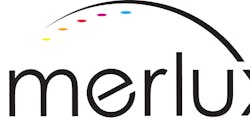The Japanese government is also funding research into solid-state lighting.
* See Japanese project enters second phase
GELcore's phosphor technology manager Emil Radkov unveiled a range of new phosphor blends that he described as having "unprecedented" performance.
* See New GELcore phosphors improve color-rendering index
LEDs are starting to penetrate aviation lighting, according to Jeff Singer of Honeywell, whose company's Astreon lights have been designed as replacements for position lights on business jets manufactured by Cessna, Gulfstream and Learjet.
* See Honeywell applies LEDs to aircraft position lights
Yoshi Ohno of NIST spoke about the issues involved with using color rendering index (CRI), while Kevin Dowling of Color Kinetics discussed how color is perceived by the human eye and the issues that are peculiar to using LEDs.
* See Issues of color rendering and perception by the human eye
A DOE-funded project to develop white OLEDs for lighting applications was described in a talk by Anil Duggal of GE Global Research Center.
* See GE develops white organic LEDs for lighting
Thermal management
In high-power LEDs, a key requirement is to increase the drive current without compromising reliability. Stanton Weaver of GELcore described various ways to manage thermal issues, which include ensuring efficient current spreading at the chip level, and designing the chip and its package as an integral process. Weaver also used thermal modeling and high resolution IR imaging to demonstrate that the placement and area of bump bonds has a strong influence on thermal gradients. Also, there is much less bump-to-bump variation using SiC compared with sapphire, due to the higher thermal conductivity of the former substrate material.
LED projection displays
An emerging application for high-brightness LEDs is in projection displays. Won Yong Lee of Samsung Electronics in Korea described efforts to utilize RGB LEDs in a 40-inch projection TV. Four LEDs of each color were used to illuminate separate LCD panels, the output from which was projected onto the viewing screen. The key to Samsung's design was the use of parabolic reflectors, polarization converters and integration rods to collect and collimate the light for each LCD screen.
RGB LEDs offer a number of attractive features, notably a large color gamut (130% of the color space defined by NTSC), a dynamic white point and a large dimming range. RGB LEDs also eliminate the need for color wheels, which are rotating filters used in color sequencing, and this makes the optical system much smaller and simpler. Also they can be turned on and off instantly, and have a relatively long lifetime. Among the drawbacks of using LEDs are the need for very accurate thermal management and color compensation, and the problems caused by a relatively low light-output density produced by large high-power chips.
Despite a total LED flux of 745 lumens, the system itself had a flux of only around 25 lumens onto the screen; with an efficiency of 3.3%, this was deemed insufficient for the application. "For these systems, we need a large flux from a small chip with high light extraction efficiency," said Lee.
Diverse applications
A number of novel and diverse applications were discussed during the meeting. LED manufacturers were encouraged to start producing LEDs for plant cultivation by Dr G Tamulaitis of Vilnius University, Lithuania, who described how replacing conventional light sources with LEDs enhances photosynthetic productivity and leads to better plant morphology. Key wavelengths include 640 and 660 nm, at which light is absorbed by chlorophyll for photosynthesis, as well as 455 nm and 735 nm.
Jack Curran of Wheelock Inc described the potential replacement of xenon gas flashtubes in visual fire alarm signals, a market that has grown exponentially in the US due to the 1990 Americans With Disabilities Act. LEDs offer comparable output for a much smaller footprint, although at somewhat higher cost. Evaluating the light sources in an office environment, Curran found that the general response times of test subjects were similar for both types of fire signal, although obstacles remain for the introduction of a new technology such as LEDs into such a safety-driven application.
A Siegel of MIT Lincoln Labs conducted a practical demonstration of covert communication using ultraviolet LEDs, transmitting data to a non-line-of-sight (NLOS) detector with a sharp cut-off solar blind filter. LEDs with wavelengths of around 275 nm, developed as part of DARPA's SUVOS program (see SUVOS pushes UV LEDs and lasers to shorter wavelengths), have been used to demonstrate NLOS links over distances of 2.1 km.
****
This is a summary of a longer article originally published in the October 2004 issue of Compound Semiconductor magazine.




